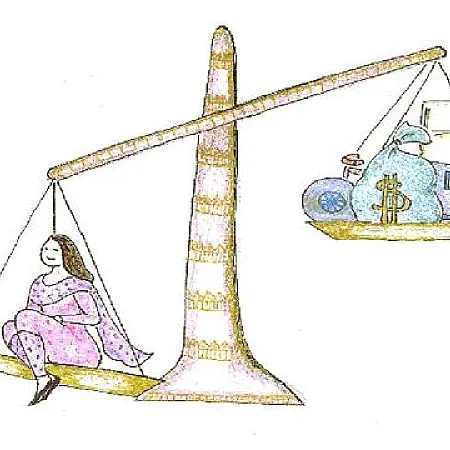Sustainable Development in Nepal: A Comprehensive Legal Analysis
Sustainable development in Nepal represents a critical intersection of constitutional rights, legislative frameworks, and international commitments aimed at balancing economic growth with environmental protection and social equity. As a country facing unique challenges including climate vulnerability, rapid urbanization, and developmental pressures, Nepal has established an evolving legal architecture to guide its sustainable development journey. This comprehensive analysis examines the constitutional foundations, legislative frameworks, implementation mechanisms, and judicial interpretations that shape sustainable development governance in Nepal.
Constitutional Foundations of Sustainable Development in Nepal
The Constitution of Nepal, 2015, serves as the cornerstone of the country's sustainable development framework, embedding environmental rights and sustainable development principles as fundamental components of the nation's governance structure.
Article 30: The Right to a Clean Environment
Article 30 of the Constitution of Nepal establishes a fundamental right to environmental protection, stating:
- Subsection (1): "Each person shall have the right to live in a healthy and clean environment."
- Subsection (2): "The victim of environmental pollution shall have the right to compensation in accordance with law."
- Subsection (3): "This Article shall not be deemed to prevent the making of necessary legal provisions for a proper balance between the environment and development, in the public interest."
This constitutional provision represents a significant advancement in environmental jurisprudence, recognizing environmental rights as fundamental rights enforceable through judicial mechanisms. The right to a clean environment is not merely aspirational but carries legal weight, enabling citizens to seek judicial remedy for environmental violations.
Directive Principles and State Policies
Part 4 of the Constitution contains Directive Principles, Policies and Obligations of the State that provide comprehensive guidance for sustainable development governance:
Article 51: Policies of the State
Article 51 outlines specific state policies related to sustainable development:
- Clause (f)(1): Mandates the formulation of "sustainable socio-economic development strategies and programs under the regional development plan for inclusive economic development with regional balance"
- Clause (f)(2): Requires development of "balanced, environment friendly, quality and sustainable physical infrastructures"
- Clause (g): Specifically addresses environmental protection, requiring the state to "pursue a policy of protecting the environment, forests, biodiversity, and natural heritage"
Sustainable Development Principles in the Constitution
The Constitution incorporates several key sustainable development principles:
- Intergenerational Equity: Implicit recognition through environmental protection provisions
- Precautionary Principle: Reference to "pre-warning and pre-informed" approaches in environmental matters
- Polluter Pays Principle: Established through compensation provisions for environmental damage
- Sustainable Development Balance: Explicit recognition of the need to balance environmental protection with development
Federal Structure and Environmental Governance
The federal structure established by the Constitution distributes environmental governance responsibilities across three levels:
- Federal Government: Responsible for national environmental policies, international environmental agreements, and cross-border environmental issues
- Provincial Governments: Manage provincial-level environmental concerns and implement federal environmental policies
- Local Governments: Handle local environmental issues, waste management, and community-based environmental initiatives
This multi-tiered governance structure reflects the constitutional commitment to decentralized environmental management and sustainable development implementation.
Key Legislative Frameworks for Sustainable Development
Nepal has developed a comprehensive legislative framework to implement constitutional sustainable development provisions, with several landmark laws establishing the legal basis for environmental protection and sustainable development.
Environment Protection Act, 2019 (2076 B.S.)
The Environment Protection Act, 2019, represents Nepal's primary environmental legislation, replacing the earlier 1997 Act. This comprehensive law provides the legal foundation for environmental protection and sustainable development implementation.
Key Provisions of the Environment Protection Act, 2019
-
Environmental Impact Assessment (EIA)
- Mandatory EIA for prescribed development projects
- Provision for Initial Environmental Examination (IEE) for smaller projects
- Public participation requirements in the EIA process
-
Pollution Control Standards
- Authority to set standards for air, water, soil, and noise pollution
- Regulation of industrial emissions and effluents
- Vehicle emission standards and monitoring
-
Climate Change Provisions
- Recognition of climate change as a critical environmental issue
- Authority to develop climate change adaptation and mitigation programs
- Integration of climate considerations into development planning
-
Institutional Framework
- Establishment of the Environment Protection Council at the central level
- Creation of the Department of Environment as the implementing agency
- Appointment of Environment Protection Officers at district levels
-
Enforcement and Penalties
- Administrative fines for environmental violations
- Criminal liability for serious environmental offenses
- Compensation mechanisms for environmental damage victims
Significance of the 2019 Act
The 2019 Act significantly strengthens Nepal's environmental legal framework by:
- Expanding the scope of regulated activities
- Enhancing enforcement mechanisms
- Incorporating climate change considerations
- Strengthening public participation provisions
- Establishing more robust institutional structures
National Climate Change Policy, 2019 (2076 B.S.)
The National Climate Change Policy, 2019, provides comprehensive guidance for climate change adaptation and mitigation efforts in Nepal.
Key Components of the Climate Change Policy
-
Climate Resilience Development
- Integration of climate adaptation into development planning
- Promotion of climate-resilient infrastructure and technologies
- Support for community-based adaptation initiatives
-
Low-Carbon Development Pathway
- Promotion of renewable energy sources
- Energy efficiency improvements across sectors
- Sustainable transportation systems
-
Institutional Coordination
- Climate Change Council chaired by the Prime Minister
- Multi-stakeholder coordination mechanisms
- Integration of climate considerations across ministries
-
International Cooperation
- Alignment with Paris Agreement commitments
- Access to international climate finance
- Technology transfer and capacity building
Forest Act and Biodiversity Legislation
Nepal's forest and biodiversity legislation plays a crucial role in sustainable development, particularly given the country's significant forest resources and biodiversity.
Forest Act, 2019
The Forest Act, 2019, provides the legal framework for sustainable forest management:
-
Community Forestry
- Legal recognition of community forest user groups
- Sustainable forest management guidelines
- Benefit-sharing mechanisms for local communities
-
Protected Areas
- Management of national parks and wildlife reserves
- Conservation of endangered species
- Sustainable tourism in protected areas
-
Carbon Sequestration
- Legal framework for forest carbon projects
- Participation in international carbon markets
- Benefit-sharing from carbon credits
Other Relevant Legislation
Several other laws contribute to Nepal's sustainable development legal framework:
- Water Resources Act, 1992: Governs sustainable water resource management
- Solid Waste Management Act, 2011: Addresses waste management challenges
- Renewable Energy Subsidy Policy: Promotes clean energy development
- Local Government Operation Act, 2017: Empowers local governments in environmental management
Sustainable Development Goals (SDGs) Implementation in Nepal
Nepal has demonstrated strong commitment to implementing the 2030 Agenda for Sustainable Development, integrating SDGs into national development frameworks and policies.
Constitutional and Policy Integration
The Constitution of Nepal, 2015, provides a solid foundation for SDG implementation through its emphasis on:
- Fundamental Rights: Including right to environment, health, education, and decent work
- Directive Principles: Guiding sustainable development policies and programs
- Federal Structure: Enabling localized SDG implementation
National SDGs Framework
Nepal has developed several key instruments to guide SDG implementation:
SDGs Status and Roadmap 2016-2030
This comprehensive document outlines:
- Baseline data for each SDG target
- Implementation strategies and milestones
- Monitoring and evaluation frameworks
- Resource mobilization strategies
15th Development Plan (2019/20-2023/24)
The current national development plan has fully mainstreamed SDGs:
- SDG codes assigned to all national development programs
- Medium-term expenditure framework aligned with SDG priorities
- Regular monitoring and reporting mechanisms
25 Year Long-Term Vision 2100
This strategic document internalizes SDGs into Nepal's long-term development trajectory, establishing:
- Long-term sustainable development goals
- Strategic milestones for 2030, 2040, 2050, and 2100
- Alignment with global sustainable development agendas
Institutional Framework for SDG Implementation
Nepal has established robust institutional mechanisms for SDG implementation:
- National Planning Commission: Coordinates SDG implementation at the national level
- SDG Steering Committee: High-level coordination among ministries
- SDG Thematic Committees: Technical coordination for specific SDGs
- Provincial and Local SDG Coordination Committees: Decentralized implementation
Progress and Achievements
Nepal has made significant progress in several SDG areas:
SDG 1: No Poverty
- Poverty incidence reduced to 18.7% (as of FY 2017/18)
- Expanded social protection programs
- Targeted poverty alleviation initiatives
SDG 3: Good Health and Well-being
- Reduction in infant, maternal, and child mortality rates
- Expansion of healthcare infrastructure
- Improved health indicators across populations
SDG 5: Gender Equality
- Constitutional guarantee of 33% women's representation
- 41% women's representation in local governments
- Gender parity in secondary education enrollment
SDG 7: Affordable and Clean Energy
- 88% population access to electricity
- Increased per capita electricity consumption
- Expansion of renewable energy sources
SDG 13: Climate Action
- Development of National Adaptation Plans
- Implementation of Local Adaptation Plans of Action (LAPA)
- Enhanced climate resilience initiatives
Challenges in SDG Implementation
Despite progress, Nepal faces several challenges in SDG implementation:
- Financing Gap: Significant resource requirements for full SDG achievement
- Data Limitations: Inadequate data for monitoring and evaluation
- Federal Transition: Ongoing challenges in federal implementation
- COVID-19 Impact: Pandemic disruptions to development progress
- Climate Vulnerability: Climate change impacts on development gains
Climate Change Governance and Legal Framework
Climate change represents one of the most significant challenges to sustainable development in Nepal, and the country has developed a comprehensive legal and policy framework to address climate-related issues.
International Commitments and National Implementation
Nepal has ratified key international climate agreements and translated these commitments into national law:
Paris Agreement Implementation
Nepal's Nationally Determined Contributions (NDC) outline:
- Climate mitigation targets and strategies
- Adaptation priorities and programs
- Climate finance requirements
- Technology transfer needs
UNFCCC Compliance
As a Party to the UNFCCC since 1994, Nepal has:
- Submitted National Communications to the UNFCCC Secretariat
- Developed National Adaptation Programs of Action (NAPA)
- Implemented climate adaptation projects
National Climate Change Legislation
While Nepal does not yet have a standalone climate change law, climate considerations are integrated across various legislative frameworks:
Environment Protection Act, 2019
The Act includes significant climate provisions:
- Authority to develop climate change programs
- Mandatory climate impact assessments for major projects
- Regulation of greenhouse gas emissions
Sectoral Climate Legislation
Climate considerations are incorporated in:
- Energy legislation: Promotion of renewable energy
- Agriculture laws: Climate-resilient farming practices
- Urban development laws: Climate-smart urban planning
- Disaster management laws: Climate-related disaster preparedness
Institutional Climate Governance
Nepal has established several institutional mechanisms for climate governance:
- Climate Change Council: High-level coordination chaired by the Prime Minister
- Climate Change Management Division: Technical coordination within the Ministry of Forests and Environment
- Multi-stakeholder Climate Change Initiatives Coordination Committee: Broad-based stakeholder engagement
- Provincial Climate Change Units: Decentralized climate action
Climate Finance and Investment
Climate finance represents a critical component of Nepal's climate governance:
International Climate Finance
Nepal accesses climate finance through:
- Green Climate Fund (GCF) projects
- Climate Investment Funds (CIF)
- Bilateral climate cooperation programs
Domestic Climate Budgeting
Nepal has implemented:
- Climate budget coding system
- Climate expenditure tracking
- Climate-responsive public financial management
Judicial Activism and Environmental Jurisprudence
Nepal's judiciary has played a crucial role in advancing sustainable development through landmark judgments and innovative legal interpretations.
Supreme Court and Environmental Rights
The Supreme Court of Nepal has been at the forefront of environmental jurisprudence in South Asia, developing several key principles:
Shrestha v. Office of the Prime Minister et al. (2018)
This landmark climate change case established several important precedents:
- Justiciability of Climate Claims: The Court recognized climate change as a justiciable issue
- Constitutional Basis: Linked climate action to constitutional rights to life, health, and environment
- Government Obligations: Ordered the government to enact comprehensive climate change legislation
- International Law Integration: Incorporated international climate commitments into domestic law
Key Holdings of the Shrestha Case
The Supreme Court ordered the government to:
- Enact a new climate change law addressing mitigation and adaptation
- Reduce fossil fuel consumption and promote low-carbon technologies
- Develop scientific and legal instruments for climate harm compensation
- Integrate climate considerations into development planning
Other Significant Environmental Cases
Nepal's judiciary has developed environmental jurisprudence through several important cases:
Environmental Protection Cases
- Pollution Control: Cases addressing air and water pollution in urban areas
- Natural Resource Management: Cases related to sustainable resource utilization
- Biodiversity Conservation: Cases protecting endangered species and ecosystems
- Development Projects: Cases challenging environmentally harmful projects
Public Interest Litigation and Environmental Justice
Public Interest Litigation (PIL) has been a powerful tool for environmental protection in Nepal:
Standing and Access to Justice
The courts have liberalized standing rules in environmental cases:
- Recognition of public interest in environmental matters
- Allowance for representative actions
- Reduced procedural barriers for environmental claimants
Remedies and Enforcement
Courts have developed innovative remedies:
- Structural injunctions for systemic environmental issues
- Continuing mandamus for ongoing monitoring
- Compensation mechanisms for environmental victims
Judicial Principles Developed
Through environmental litigation, Nepali courts have developed several key principles:
- Sustainable Development Principle: Balance between environmental protection and development
- Precautionary Principle: Preventive action in the face of scientific uncertainty
- Polluter Pays Principle: Liability for environmental damage
- Intergenerational Equity: Protection of environment for future generations
- **Public Trust Doctrine: Government as trustee of natural resources
Implementation Challenges and Enforcement Issues
Despite a comprehensive legal framework, Nepal faces significant challenges in implementing sustainable development laws and policies.
Institutional Capacity Constraints
- Limited Technical Expertise: Shortage of skilled professionals in environmental management
- Financial Resources: Insufficient funding for environmental programs and enforcement
- Coordination Challenges: Difficulties in inter-agency coordination and federal implementation
- Monitoring Capacity: Limited ability to monitor compliance with environmental laws
Enforcement Challenges
- Weak Enforcement Mechanisms: Limited capacity for monitoring and enforcement
- Political Interference: Political considerations affecting environmental decision-making
- Corruption: Corruption issues affecting environmental governance
- Judicial Delays: Backlog of cases in environmental matters
Federal Transition Challenges
Nepal's transition to federalism has created additional implementation challenges:
- Capacity Gaps: Limited capacity at provincial and local levels
- Coordination Issues: Challenges in coordinating across three levels of government
- Legal Uncertainty: Ongoing clarification of environmental jurisdiction
- Resource Allocation: Equitable distribution of environmental resources
Climate Change Vulnerability
Nepal's extreme vulnerability to climate change creates additional implementation challenges:
- Glacial Lake Outburst Floods: Risk of catastrophic flooding events
- Changing Monsoon Patterns: Impacts on agriculture and water resources
- Extreme Weather Events: Increased frequency of floods and droughts
- Ecosystem Disruption: Impacts on biodiversity and ecosystem services
Future Directions and Recommendations
To strengthen sustainable development governance in Nepal, several key reforms and initiatives are needed:
Legal and Policy Reforms
- Comprehensive Climate Change Legislation: Enactment of standalone climate law as ordered by the Supreme Court
- Environmental Code Consolidation: Consolidation of fragmented environmental laws
- Strengthened Enforcement Mechanisms: Enhanced penalties and enforcement powers
- Federal Environmental Legislation: Clarification of environmental jurisdictions across government levels
Institutional Strengthening
- Capacity Building: Training programs for environmental officials at all levels
- Technical Resources: Enhanced technical capacity for environmental management
- Coordination Mechanisms: Improved inter-agency coordination structures
- Public Participation: Strengthened mechanisms for public engagement
Climate Action Enhancement
- Adaptation Planning: Enhanced climate adaptation programs and projects
- Mitigation Strategies: Expanded renewable energy and energy efficiency programs
- Climate Finance: Improved access to and management of climate finance
- Technology Transfer: Enhanced technology transfer and capacity building
Judicial and Legal System Improvements
- Environmental Courts: Establishment of specialized environmental courts
- Alternative Dispute Resolution: Enhanced ADR mechanisms for environmental disputes
- Legal Aid: Expanded legal aid for environmental claimants
- Judicial Training: Specialized training for judges in environmental law
Conclusion: Pathways to Sustainable Development in Nepal
Sustainable development in Nepal stands at a critical juncture, with a comprehensive constitutional and legal framework providing the foundation for progress, but significant implementation challenges remaining. The country's commitment to sustainable development is evident in its constitutional provisions, legislative frameworks, international engagement, and judicial activism.
The integration of environmental rights as fundamental rights in the Constitution, the development of comprehensive environmental legislation, the mainstreaming of SDGs into national planning, and progressive judicial interpretations demonstrate Nepal's serious approach to sustainable development. However, effective implementation remains the key challenge, requiring strengthened institutions, enhanced capacity, adequate resources, and continued political commitment.
For legal professionals, understanding Nepal's sustainable development framework is essential for navigating the evolving legal landscape, advising clients on environmental compliance, advocating for environmental justice, and contributing to the development of more robust sustainable development governance. The intersection of constitutional law, environmental legislation, climate policy, and judicial decisions creates a complex but dynamic field of practice.
As Nepal continues its journey toward sustainable development, the legal community will play a crucial role in shaping implementation, ensuring compliance, protecting environmental rights, and contributing to the evolution of sustainable development jurisprudence. The balance between development needs and environmental protection, the integration of climate considerations into all aspects of governance, and the empowerment of local communities in environmental management will remain key areas of focus for legal practitioners and policymakers alike.
The future of sustainable development in Nepal will depend on the effective implementation of existing laws, the development of new legal frameworks to address emerging challenges, and the continued evolution of environmental jurisprudence through judicial activism and legal innovation. With strong constitutional foundations, comprehensive legislation, and an engaged legal community, Nepal is well-positioned to advance its sustainable development agenda while addressing the complex challenges of the 21st century.
Frequently Asked Questions About Sustainable Development Law in Nepal
Q1: What constitutional provisions support sustainable development in Nepal?
A: The Constitution of Nepal, 2015, includes Article 30 (right to clean environment), Article 51 (directive policies for sustainable development), and various provisions in Part 4 that mandate environmental protection, sustainable development, and climate action as fundamental state obligations.
Q2: What is the primary environmental legislation in Nepal?
A: The Environment Protection Act, 2019 (2076 B.S.) is Nepal's primary environmental legislation, replacing the 1997 Act. It provides comprehensive frameworks for environmental impact assessment, pollution control, climate change action, and institutional governance.
Q3: How has Nepal integrated SDGs into its legal framework?
A: Nepal has integrated SDGs through the SDGs Status and Roadmap 2016-2030, 15th Development Plan (2019/20-2023/24), and 25 Year Long-Term Vision 2100. SDGs are mainstreamed into national planning with specific codes assigned to development programs and regular monitoring mechanisms.
Q4: What significant climate change cases have shaped Nepal's environmental jurisprudence?
A: The landmark Shrestha v. Office of the Prime Minister et al. (2018) case ordered the government to enact comprehensive climate change legislation and established climate change as a justiciable right linked to constitutional environmental protections.
Q5: How does Nepal's federal structure affect environmental governance?
A: Nepal's federal structure distributes environmental responsibilities across federal, provincial, and local governments, with the federal government handling national policies and international agreements, provinces managing regional environmental issues, and local governments addressing community-level environmental concerns.
Q6: What are the main challenges in implementing sustainable development laws in Nepal?
A: Key challenges include institutional capacity constraints, enforcement limitations, federal transition coordination issues, climate vulnerability, financing gaps, and data limitations for monitoring progress.
Q7: How does Nepal's judiciary contribute to environmental protection?
A: Nepal's Supreme Court has developed progressive environmental jurisprudence through public interest litigation, expanding standing rules, establishing environmental rights as justiciable, and ordering government action on climate change and environmental protection.
Q8: What climate change commitments has Nepal made internationally?
A: Nepal has ratified the UNFCCC, Paris Agreement, and other international climate agreements, submitting Nationally Determined Contributions (NDCs) that outline climate mitigation targets, adaptation priorities, and climate finance needs.




